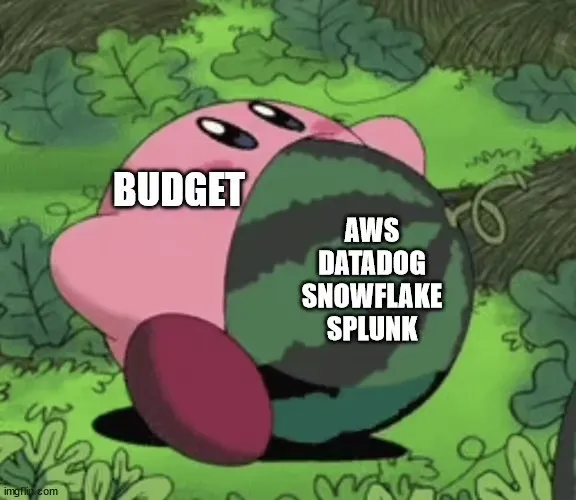As FinOps becomes a critical focus for tech companies, understanding the state of FinOps practices and trends is essential for CTOs and engineering leaders. Based on interviews with over 60 technology leaders across European tech firms, this report provides a benchmark of FinOps best practices, common challenges, and strategic insights for effective cloud cost management.
Our interviews included CTOs, VPs of Engineering, and senior leaders from B2B SaaS companies and other tech-driven organizations with substantial engineering teams. These insights are particularly valuable for tech companies relying heavily on major cloud providers.

Key Topics Covered in the 2024 European FinOps Report
- Methodology
- Current FinOps Practices and Challenges
- Cost Reduction Initiatives
- Cloud Budgeting and Forecasting
- Cloud Cost Incident Prevention
- Building Cost-Consciousness in Tech Teams
- The Future of FinOps in European Tech
Methodology
Our discussions focused on four main topics:
FinOps Practices and Rituals
- Who is responsible for managing cloud costs within the tech team?
- How much time is spent on FinOps activities each month?
- For companies with more advanced practices, how do they allocate shared costs to different teams?
- How do they forecast cloud budgets for the coming year, and what input drives this forecasting?
Cloud Cost Incidents
- Have they experienced any significant cloud cost incidents recently?
- How did they manage and resolve those incidents?
- What tools or strategies would have better helped them handle the incident?
Cost-Consciousness within Tech Teams
- Are tech leaders satisfied with the level of cost-awareness within their engineering teams?
- If yes, what practices or tools have supported this?
- If not, what steps are being taken to improve cost consciousness?
The Future of FinOps
- What is their outlook on the future role of FinOps in their organization?
What Provider they use
All the participants are clients of major cloud providers (from the top three vendors), with the majority utilizing multiple cloud providers.
Around 20–25% of these companies still maintain some on-premise infrastructure, with only one organization exclusively using on-prem solutions
FinOps Practices: Still in Early Stages for Most European Tech Companies
For many tech companies in Europe, FinOps is still in the early stages, often managed by CTOs or Heads of Infrastructure alongside other responsibilities. Less than 10% of companies have a dedicated FinOps role, with leaders spending an average of 10–20 hours per month on FinOps tasks, such as preparing quarterly cloud cost reports and responding to cost incidents.
For most, FinOps practices are reactive, with teams only investigating cloud costs after issues arise.
However, a small number of mature firms (fewer than 5%) are developing custom dashboards for proactive cloud cost management — a trend driven by private equity pressures or a focus on profitability.
Cloud Cost Reduction: A Key Focus for European Tech Leaders
Cost reduction is a top priority among European tech companies, especially over the past 18 months, as the focus has shifted from growth to profitability. For these organizations, CTOs lead cost-saving efforts, and some have implemented formal cost steering committees. Many companies are achieving substantial savings (up to 20%) through these initiatives, though consistent follow-through after the initial burst remains challenging as CTOs balance multiple priorities.
Budgeting and Forecasting Cloud Costs: An Opportunity for Improvement
Despite increasing attention on cost optimization, budgeting and forecasting practices remain underdeveloped in many European tech companies. Cloud budgets are often based on high-level estimates, with limited integration of bottom-up input linked to business drivers like customer growth. Improving this alignment between cloud costs and business metrics presents a significant opportunity for companies striving to make FinOps a strategic advantage.
The Importance of Small Cloud Savings in Europe’s Tech Landscape
Reducing cloud costs, even modestly, can greatly impact profitability. Many European leaders recognize that small percentage reductions in cloud spend can improve EBITDA significantly. For instance, a 5% reduction in cloud costs could improve EBITDA by 1.25% — which would otherwise require an 40-fold revenue increase. This potential for increased profitability motivates many tech companies to make cloud cost management a priority within their broader FinOps strategy.
Cloud Cost Incidents: Common and Costly for European Tech Firms
Every organization we interviewed had experienced at least one cloud cost incident in the past year, with many facing multiple major incidents. Despite these recurring issues, only 20–30% of European tech companies have invested in proactive tools or processes to prevent future incidents.
Although some leaders have even considered returning to on-premise infrastructure to reduce cloud cost volatility, this remains rare. Incidents are often identified only after invoicing, leading to reactive, time-consuming responses.
Most companies now rely on alerts to track cloud cost anomalies, though these alerts are often manually configured and prone to false positives — a topic we’ll explore in an upcoming article on the common pitfalls of cloud cost alerting.
Fostering Cost-Consciousness: A Growing Priority for European Tech Teams
Building cost-consciousness within engineering teams is a priority for European tech leaders, but it remains a challenge. Fewer than 5% of companies provide developers or team leads with full cloud cost visibility. Most shared cloud costs are managed by central infrastructure teams, creating a disconnect between cloud usage and financial responsibility.
While CTOs recognize the need for greater cost-awareness within development teams, the lack of adequate tools and training is a significant barrier to widespread adoption of cost-conscious practices.
Native Tagging: Complexity in Cost Visibility
Native tagging, often seen as a straightforward solution for tracking cloud costs, is difficult to implement effectively. Many companies overestimate their level of tagging coverage, with actual adoption rates often below 50%. Achieving full compliance can take significantly longer than expected, frequently extending up to 18 months.
The Future of FinOps in European Tech Companies
European tech leaders see the future of FinOps as a proactive, culture-based approach, embedding cost-awareness into each stage of software development. As cloud costs continue to grow, cross-functional collaboration between cost management, infrastructure, and business strategy will become increasingly important. Over 70% of leaders we spoke to anticipate that AI-driven tools will be instrumental in optimizing FinOps practices, potentially even outperforming internal teams in managing cloud costs.
AI , Data and Serverless projects are accelerating FinOps Adoption in Europe
The adoption of AI and serverless architectures is expected to accelerate the need for FinOps among European tech companies. Serverless services, with their granular, usage-based pricing, require more sophisticated cost controls, while AI-driven FinOps tools offer real-time insights and cost optimization. This combination will drive faster FinOps adoption, enabling tech leaders to manage cloud costs more effectively while scaling innovation and profitability.
Conclusion
The 2024 State of FinOps for European Tech highlights both the progress and challenges facing tech companies as they work to build effective FinOps practices. While FinOps is still developing in many organizations, the insights in this report underscore the growing importance of building cost-consciousness, improving budgeting and forecasting, and preparing for more complex cloud cost management as AI and serverless adoption grows. By implementing robust FinOps practices, European tech leaders are well-positioned for sustainable growth and cost-efficiency in an increasingly competitive market.
